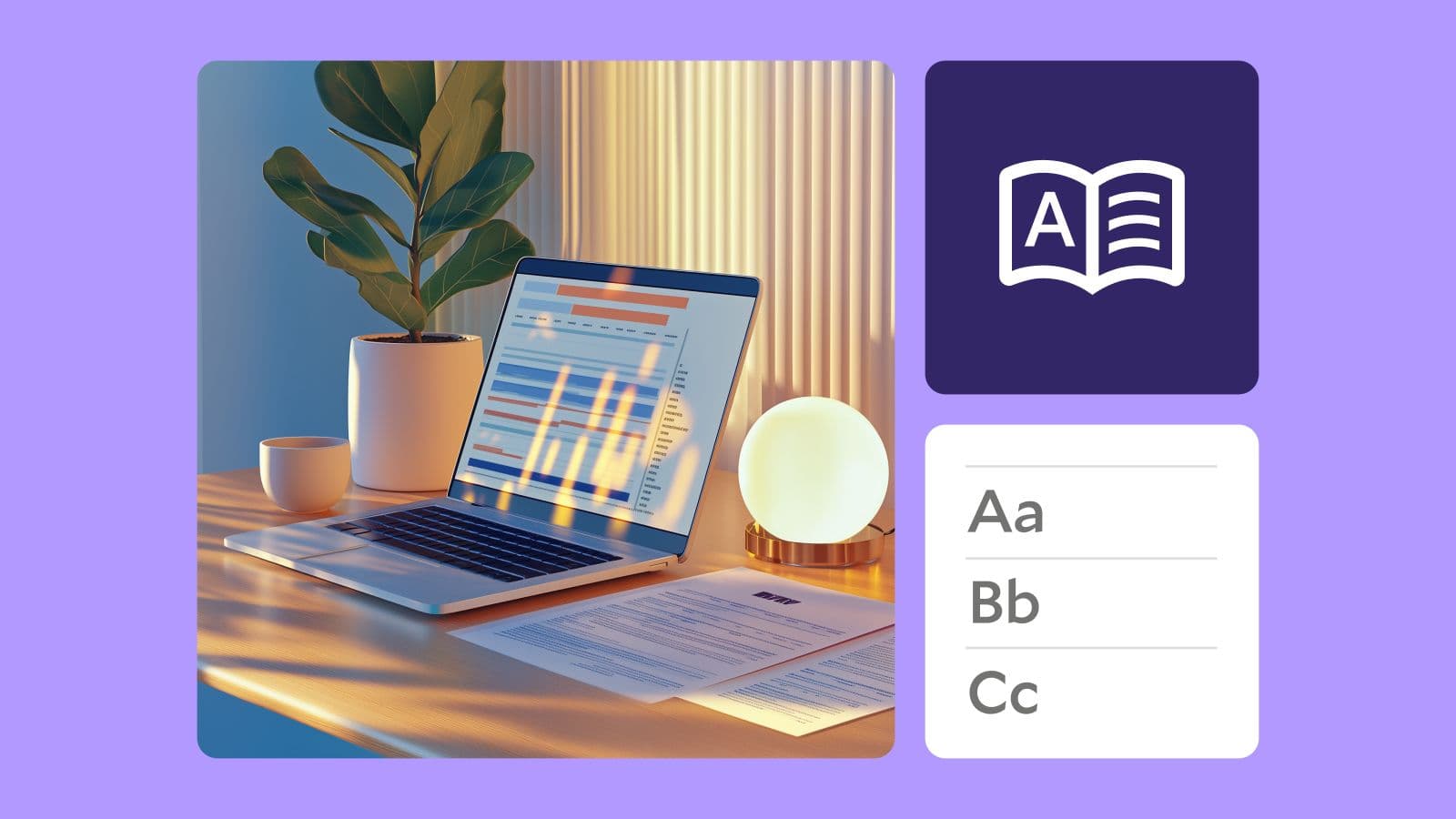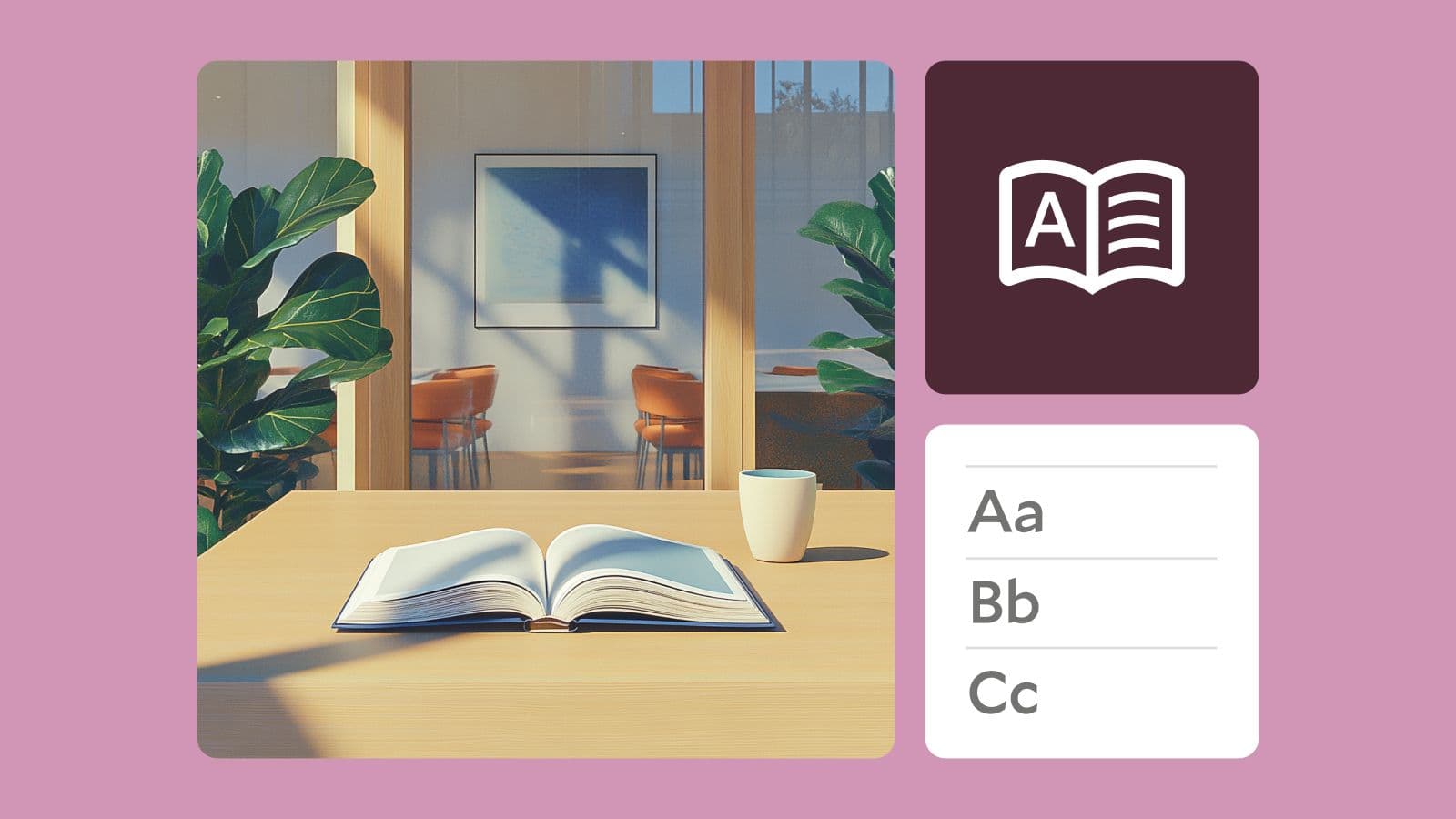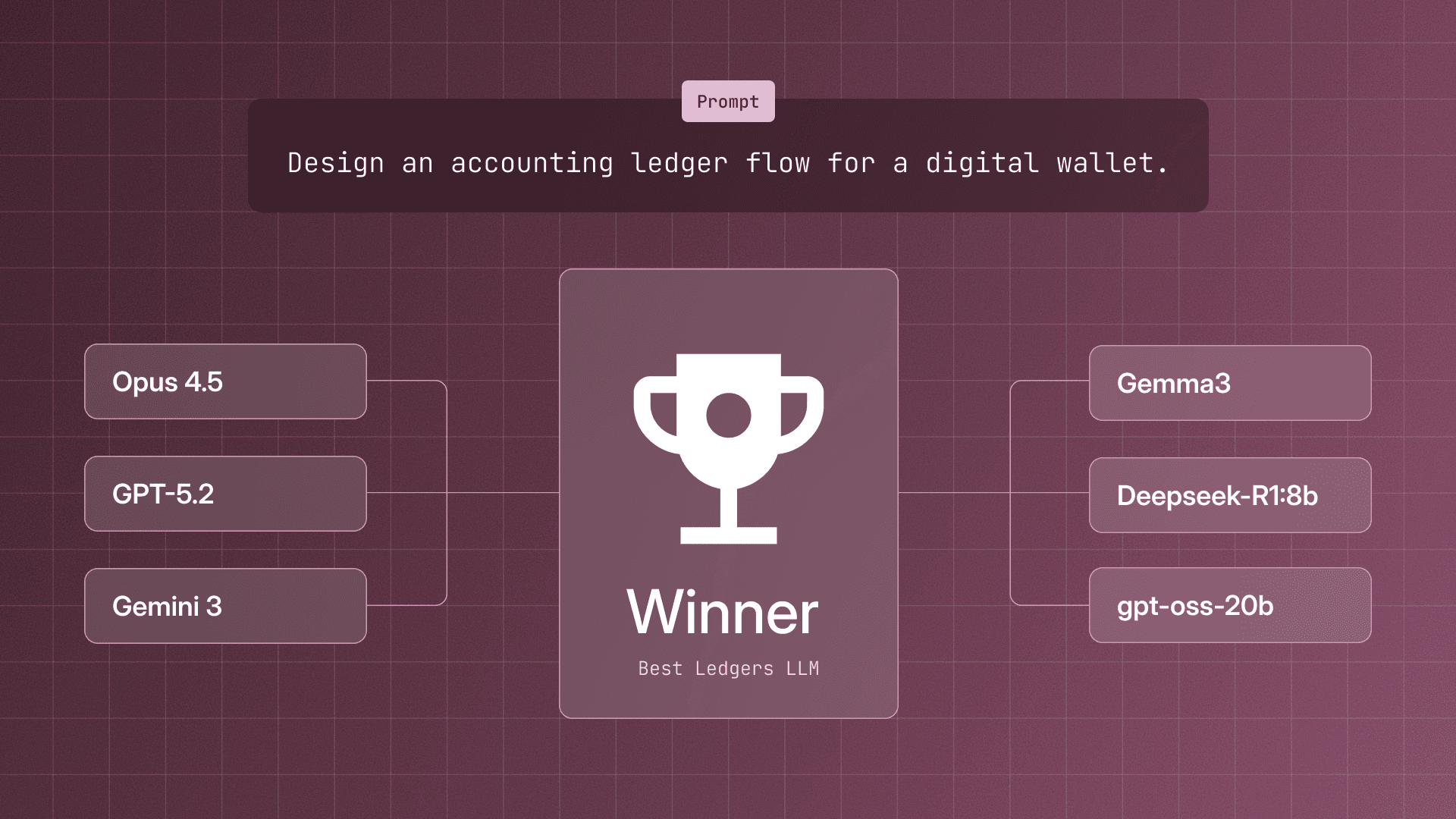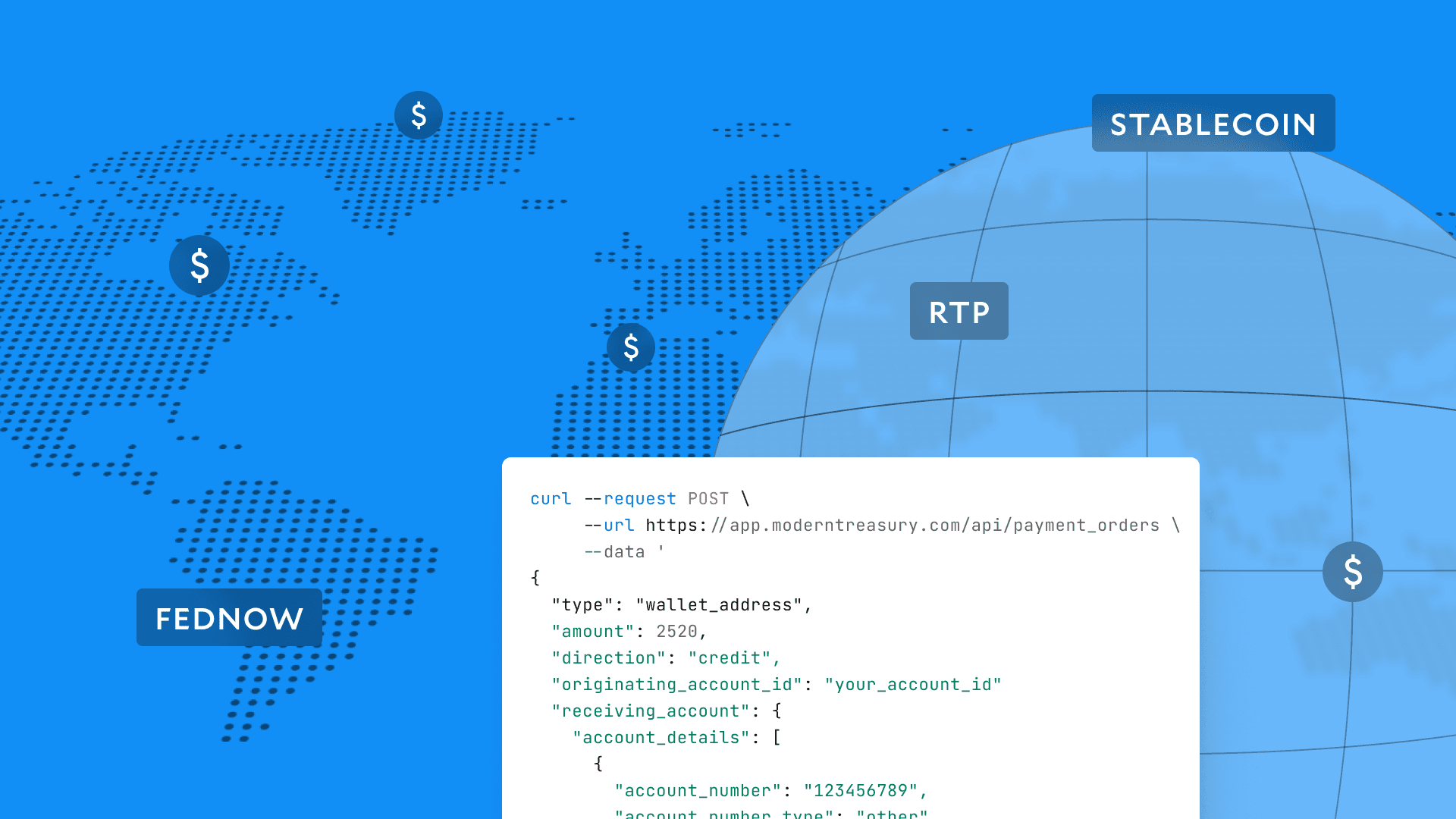Modern Treasury and Paxos Make It Easier for Businesses to Move Money with Stablecoins.Learn more →
Innovating in the ACH Network: Our Conversation With Nacha
Modern Treasury recently hosted a webinar in conjunction with Nacha, to chat about innovation and how companies can better take advantage of the ACH network. This journal covers the key takeaways from the discussion.

Since its inception, the ACH network has been one of the backbones of the US payments ecosystem. As the API economy advances, more companies are using ACH to automate complex money movement and build novel payment experiences.
Last week, we hosted a webinar focused on bank payment automation and the exciting possibilities for innovation on the ACH network, moderated by Modern Treasury Product Marketing Manager Lucas Rocha. The discussion featured Modern Treasury CTO and Co-founder, Sam Aarons, and Senior Director of ACH Network Rules at Nacha, Amy Morris. Here, we’ll recap their discussion and highlight some of the key takeaways.
Note: This isn’t a transcript, but an abridged and summarized version of the discussion. If you’d like to view the full webinar, you can do so here.
How Nacha and Modern Treasury Work Together
Lucas: Amy, can you give us a sense of what the Nacha does and what role it plays in managing the ACH network?
Amy: Yes! Nacha is an administrator, meaning that we perform functions necessary to the network, like gathering some of the statistics we're going to talk about today. We also are the rulemaking body for the ACH network, and we have an enforcement arm for those rules as well. All of Nacha’s rules are written by our team in conjunction with rulemaking committees, and we have a public process for rulemaking to gather public comments. That eventually becomes the rights and responsibilities of every participant in the ACH network.
Nacha also plays an important educational role in helping to bring the network participants and payments folks together, with things like our payments conference and helping to educate the industry regulators, governments, and so on about the ACH network.
But with Nacha we don't actually see the transactions or process any transactions, because that is handled by ACH operators. In the US, we have two ACH operators, the Federal Reserve and the electronic payments network (EPN), which is held by The Clearing House. Nacha is more of the logistical and admin side of things.
Lucas: Sam, can you describe Modern Treasury at a high level?
Sam: Modern Treasury is the operating system for money movement—we help companies move, track, and reconcile lots of money in real time. Being predominantly based in the United States, one of our largest payment networks is the ACH network. For ACH specifically, we’ve built a lot of tools that help companies originate ACH payments. Like Amy said, there are a lot of operating guidelines for how to generate these very specific payments and there are various specific rules for how you monitor them for any returns or reversals, too.
Modern Treasury includes all of that in a software platform that makes it very easy to use the ACH network at scale. If you're sending a lot of ACH payments, Modern Treasury is essentially helping facilitate that by generating the payment file, tracking where those payments are, and ultimately reconciling your books at the end of the day.
Lucas: And, Sam, the origin story of Modern Treasury is deeply related to dealing with the Nacha guidelines and interacting with the ACH network, right?
Sam: Yeah, absolutely. Me and the other co-founders of Modern Treasury—Matt and Dimitri—used to work at a mortgage company where we were responsible for building a product that needed to interact with the ACH network. We were interacting with property investors. We were interacting with borrowers. So there was a lot of ACH flowing around, and we had to quickly figure out how to use the ACH system.
We asked our financial institution, “How do we enable this product to originate ACH payments?” And one of the first things they said was, “Well, you're going to have to learn the rules.”
We got the operating rules and guidelines for the ACH network, which is a 900-page book. And we had to build software to implement these 900 pages of rules, which meant we had to learn the rules, understand how to implement them (what the exact formatting is), and understand how the ACH system operates. And after we had finally built the software that did all this, we then went around and we asked other companies, “Hey, how did you set yourself up to use ACH?” And every single company answered the same way, “We built it ourselves.”
That's what gave us the idea to build Modern Treasury, which is a service that people can use where they don't have to repeatedly exercise resources to learn all those rules and be a good partner for the ACH network. So we decided to start Modern Treasury, in part, to just make it easier to interface with the ACH system and the myriad rules that it has.
Innovation in the ACH Network
Lucas: It’s exciting to see how complementary our work has been. We know that the network has been innovating since 1972. Amy, can you give us an overview of the major innovations that the ACH network has brought to market?
Amy: Absolutely. Really, innovation is at the very heart of Nacha and the ACH network. It really is what we were founded on. Nacha was created with the purpose of creating a national network among all of the individual regional networks. The ACH network’s first format was what we call the PPD, which is a way for organizations to either push funds or pull funds from a consumer's account. We started out very, very basic. But the federal government usage grew from there.
The first use case, probably no surprise, being direct deposit, and more specifically the Department of Defense. They needed a way to pay service members who were in various places and, if you think about it, that’s very high-volume and spread out geographically. More than 97% of Federal Government payments are now through the ACH network. More than 93% of people that work today get direct deposit, still on that same 1975 format that has been modernized over time.
Over time, the network has expanded. Initially, because there was no internet, there was no remote deposit capture, for example. Financial institutions sometimes would create little networks and band together to allow for their customers to be able to deposit or use the ATMs of the other financial institutions, and the ACH network created formats to allow for those transactions to settle in the nineties. The ACH network also created formats for check conversion, formats for telephone payments, and later on, internet payments and mobile. We’ve also got things like same-day ACH and things born out of risk management, like micro entries.
Lucas: Sam, Modern Treasury helps companies use the ACH network to innovate. By innovation, we mean that they’re using the Modern Treasury platform to drive efficiency in the business by automating ACH, and, in some cases, coming up with novel customer experiences. Can you share examples of how some companies are doing this today?
Sam: Modern Treasury is an ACH service provider, so we help originators—companies who originate ACH payments—get their payments correctly formatted, sent to their financial institution, and monitor for returns, and we do reconciliation at the very end. We deal with a lot of originators who are very high-volume customers and who do a lot of payments and have a variety of different use cases, but they all have use cases that align very nicely with the benefits and the advantages of using the ACH network.
One of our customers that uses ACH quite a bit is an online stock investing company. And what they do is essentially take small amounts from a consumer's bank account and they invest that into the stock market. Sometimes these payments are for $0.33 or $0.79 or $1.50, so very small payments. And this is happening constantly: every customer of theirs, I believe, gets a debit or many debits every day. There are tens of thousands of these debits that go through Modern Treasury that we're taking in for this customer and their customers. And that's something that can only happen on the ACH network, because ACH is the only network that allows debits in the United States. This customer uses Modern Treasury to automate all these payments, keep track of them, and monitor any returns that might come up.
We also have a customer called Navan, which is an expense management travel platform for companies to book travel. We have a health insurance company called Sana. We have a variety of different use cases that use our platform for ACH because they send a lot of money, credits and debits, to consumer bank accounts.
Lucas: Amy, are there any stories you can share of how companies are using ACH to operate successfully?
Amy: Yes, thank you for mentioning that! There are some great success stories and use cases on our website in a lot of different industries. One that we've recently been calling out is healthcare, and in particular, the dental space. And not just for the claim side, as in an insurance company paying a doctor or a dentist, but also for patient payments as well.
Particularly when talking about those patient payments, ACH is safer than employees having to deal with paper checks. We've got some really great success stories out there of these small businesses that have really managed to gain efficiencies with ACH.
Lucas: What's one piece of advice that you'd give to finance, payments, and product leaders in terms of working with the ACH network and how can they use it to drive innovation in their own companies?
Sam: One piece of advice I have is just to use the ACH network. Use all the features that are available to you. Just in this conversation alone, we've talked about micro deposits, same-day ACH, international payments, check conversions. I think one of the biggest ways you can innovate within your company via the ACH network is to really explore all that it has to offer and to take advantage of it, because it's a very rich, growing system in the US. I don't think there's any end to the possibilities if you're looking at payments innovation.
Amy: I would really just add on to what Sam has said. Of course I'm going to give a shout out to Nacha, but I know that not everybody wants to get into the weeds like Sam and I do when it comes to payments, rules, etc. But I think at least taking advantage of the resources Nacha has to offer. The Nacha website, for example, can give you a lot of really good information about some of these innovations.
The conversation also included audience Q&A. To watch the full session, view the recording here.
What’s Next?
Modern Treasury enables companies to automate payments, tracking, reconciliation, and more while taking full advantage of what the ACH network has to offer. If you are interested in learning more, reach out to us.








